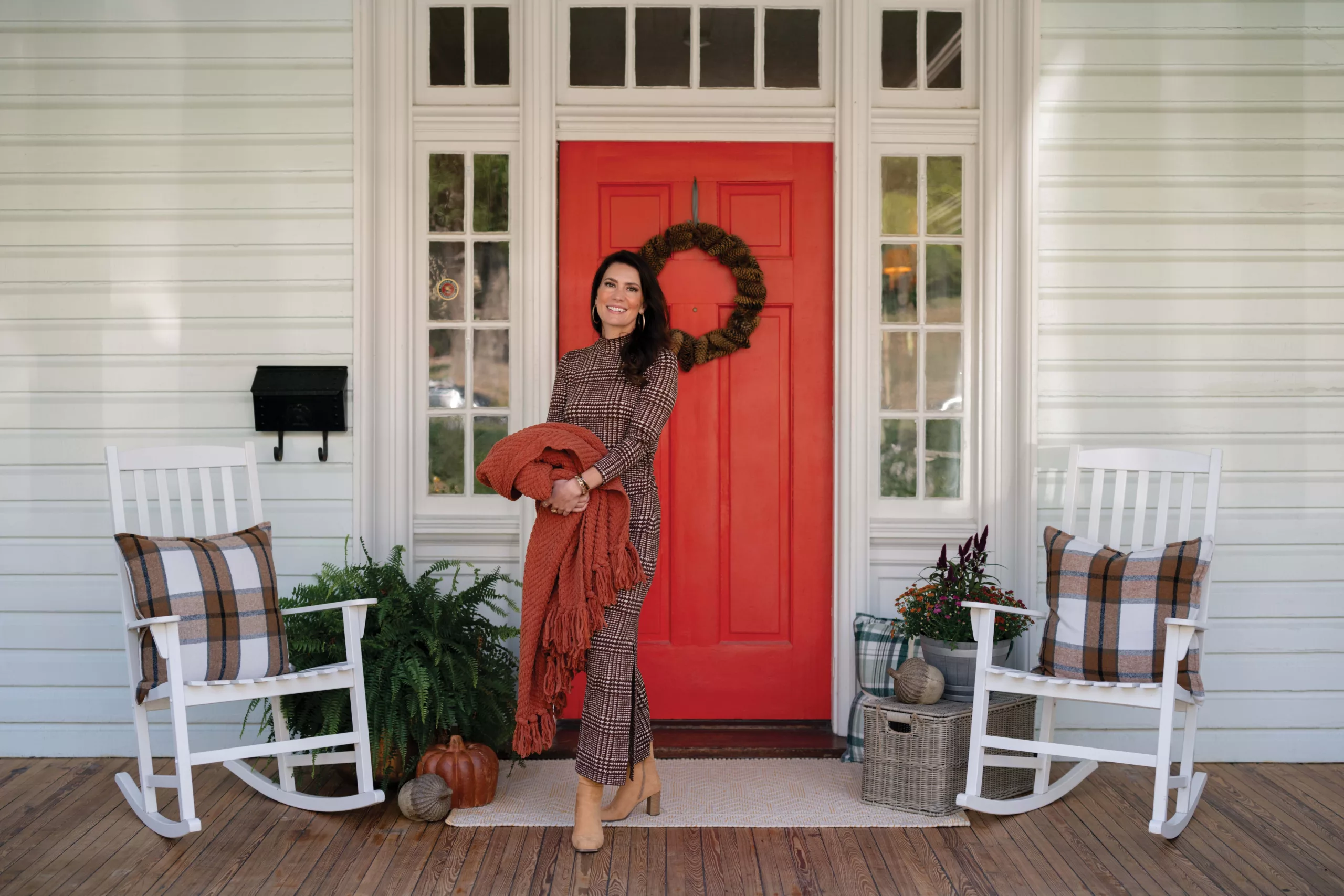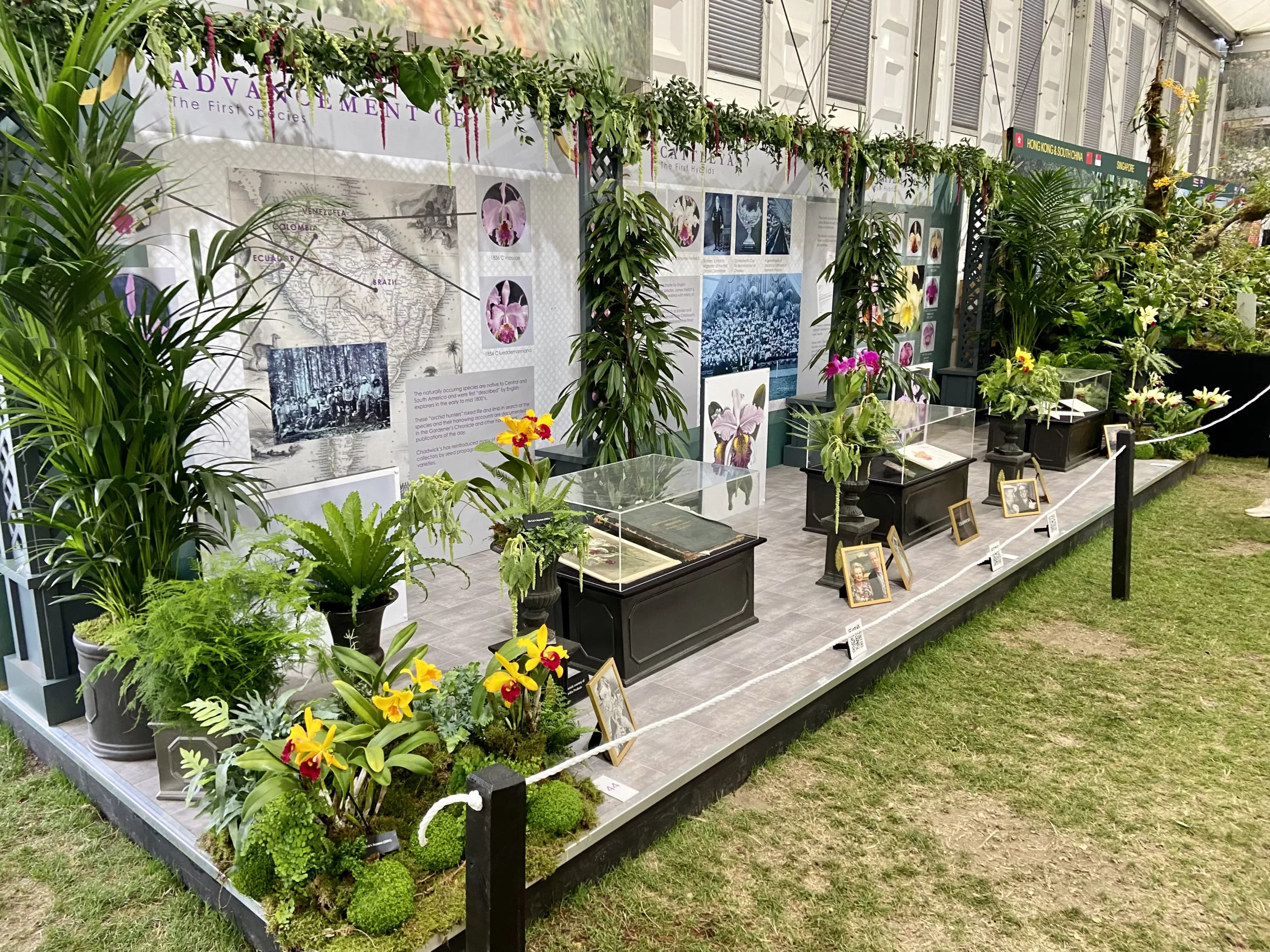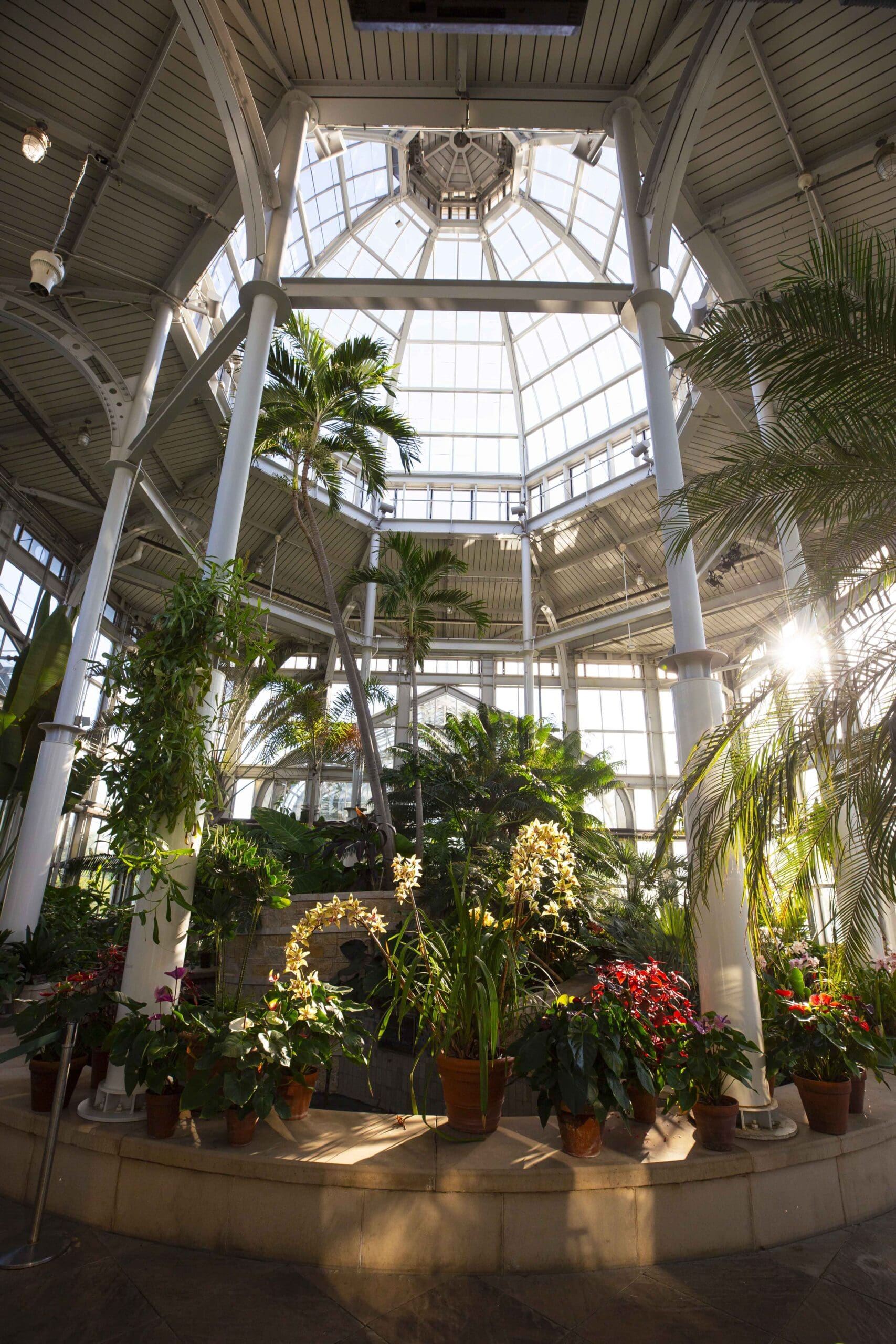Stroll up to Julia Price’s Staunton home, and you’ll see an unassuming, American, foursquare farmhouse. But its lipstick-red door is the harbinger of a home that brings glamour and lighthearted frivolity to a practical Southern silhouette—a theme that could also be said to describe its owner.
Price, a former antique shop owner turned DIY-renovator and content creator, brings a get-it-done attitude to everything from sanding her front porch to battling groundhogs in the garden. Yet she does it all with a sashay across her original hardwood floors and a sassy dress with a perfectly cinched-in waist.
You could say her connection to the old home was fate.
“I never looked at a new build; it wasn’t even an option. I wanted something we could help restore and that I could make my own—two birds, one stone,” says Price.
When she walked up to the front door for the first time, she was taken aback by the large open foyer waiting just beyond it. “This is a sweeping effect you’d see in a much larger, hoity-toity, grand home. It was such a delightful surprise, and, because I love to entertain, I imagined my family, friends, and guests experiencing that same feeling.”
“Lord have mercy, the house was not good, but I knew from that one entry moment that we could make it really, really special,” recalls Price.
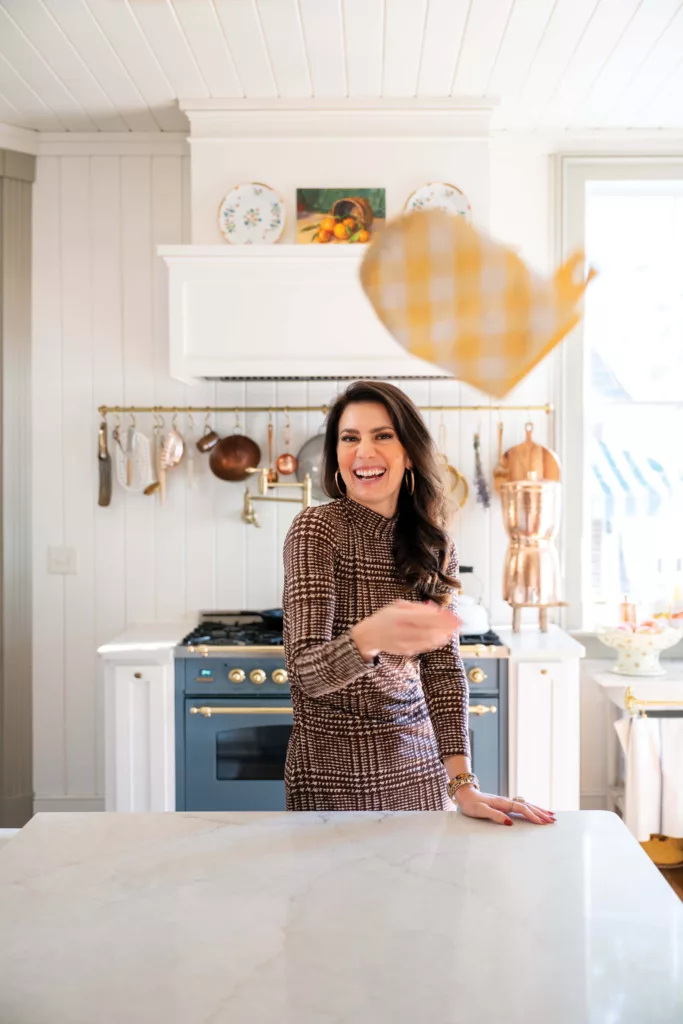
Influencer Julia Price in her Staunton home’s remodeled kitchen, the star of her renovation. The bellissima Ilve range is swoon-worthy.
Uncovering a Home’s History
Price learned that her home had been part of a trio of structures built by John Elchols, a Civil War general who found his fortune post-war in Staunton as president of the Staunton National Valley Bank.
In the early 1900s, the house was moved up the road using screw jacks and horses, and two floors were added to adapt to its new, hillier location. Charles E. Ashburner moved into the house in 1909 when he was hired as the city’s first manager. Highly educated and brought in from England, Ashburner had a preference for the finer things in life. He added a formal dining room, butler’s buttons, and altered the facade of the house—all changes that led to Price’s reaction: “What a grand home—for a farmhouse!”
With nine porches, floor-to-ceiling windows, and French doors, the home was full of touches that exceeded its humble shell. But there was also something intangible that spoke to Price. “She’s quirky and uneven, but she had good bones and a good feeling. This house felt like springtime and was ready to wake up,” says Price.
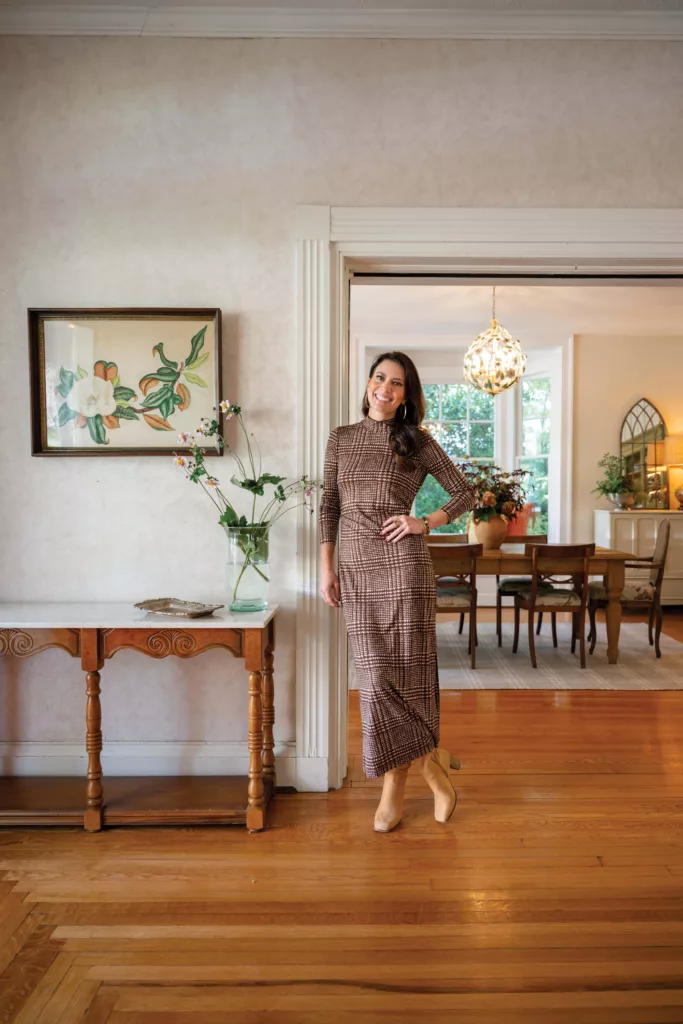
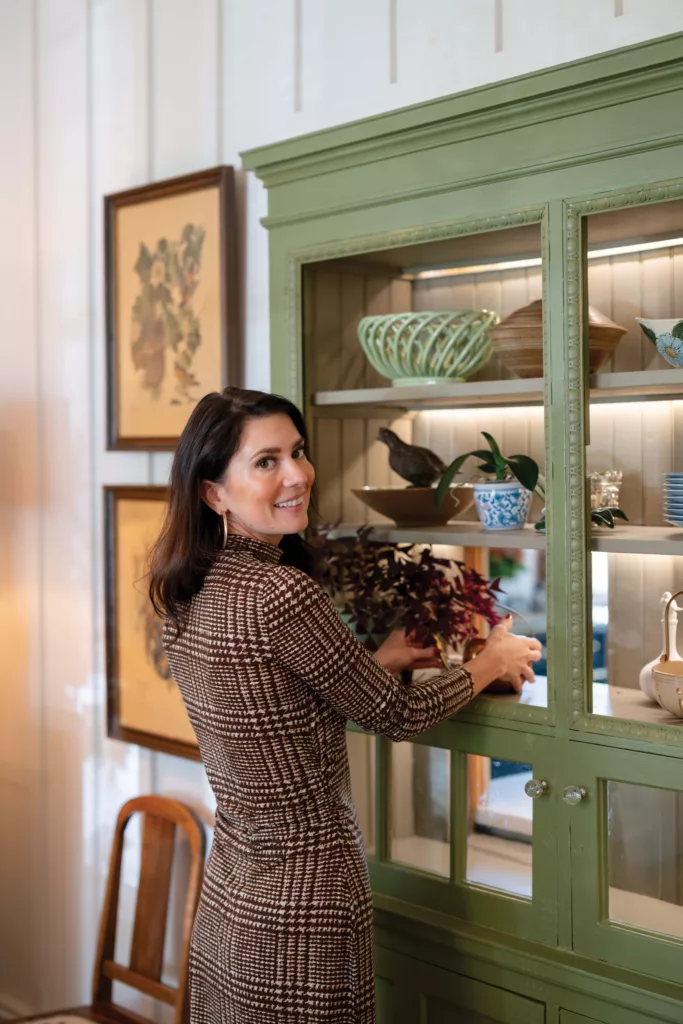
Price says that the project involving the green cabinet was a labor of love that was more complicated than she anticipated. Her solution involved trimming down the piece and adding open shelves.
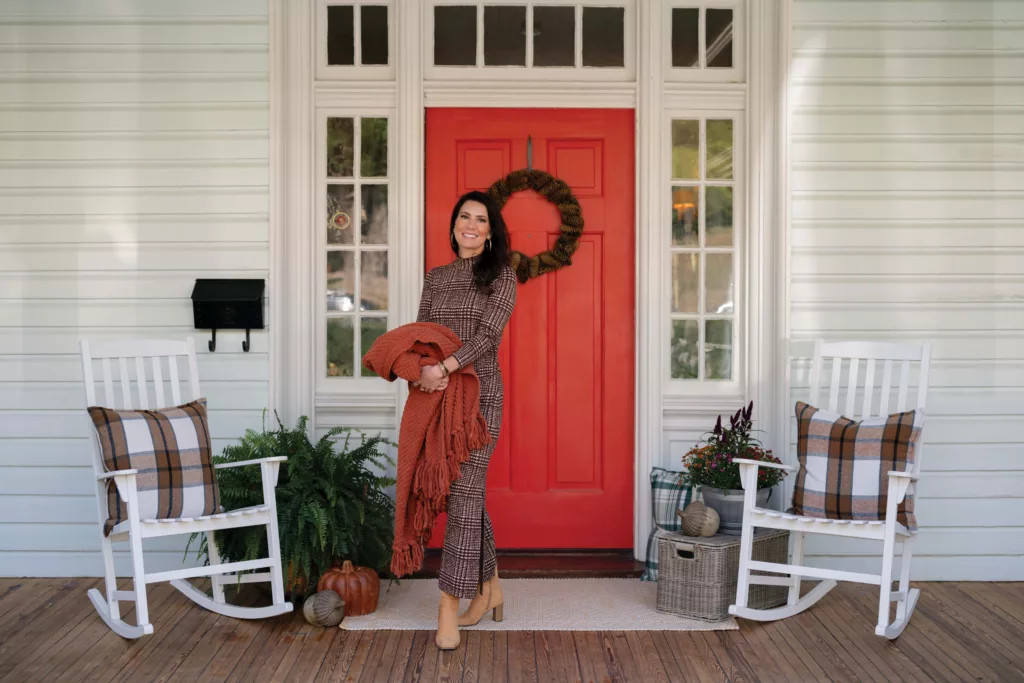
Removing trees in the front yard taught Price that altering one element of a historic home can impact the entire structure. Shade had protected the floorboards, but once it was gone, rain and sun damage became more apparent. Price taught herself a new skill and refinished the floorboards herself.
Restoring the Authenticity
Renovating—which is ongoing—has been no small feat, however.
“I had blind faith and ambition. I had no idea what it would take, but if you ask me to build a rocket ship, I’d say, ‘absolutely, I’ll try,’” says Price. “Other than loving historic houses, I had no knowledge. But if you want to do something bad enough, you’ll find a way.”
Initial projects included a garden apartment, which Price and her husband turned into an Airbnb, and her son’s nursery, which was finished five days before he arrived home to the best street in Staunton.
But the pièce de resistance was the kitchen. Typewritten notes from Gwen Walsh, from whom Price purchased the home, were tucked away inside the kitchen walls, each revealing themselves at just the right time. One note read, “I got a quote from a contractor that wanted $50,000 to level this room.” Price believes she was trying to explain not only her decisions but why she hadn’t done things. Walsh, who’d been a professor at Mary Baldwin, knew the floor joists were crooked, and she didn’t want a future owner to think otherwise.
Price’s goal in the kitchen was to create a space that felt as if it had always been there, and she let both Walsh’s clues and the ones offered by the house’s inner workings guide her.
“We found a concrete slab where the original double decker range was and, because people back then were primarily concerned with practicality in the space, not what other people were doing, we knew we needed to put the hearth right back there.” says Price, who found an Ilve oven to fill that spot with vintage appeal.
She also focused on creating clear space, which is common in historic homes. “I didn’t want my forehead in a cabinet.”
Details like a formidable blue cabinet were brought in to further tie the space to the history of both the home and the area. That cabinet came from Mary Baldwin University, where Walsh had taught physical education and dance. The original butler’s pantry cabinet remains because it’s a unique glimpse at the past—one that’s been ripped out of most homes.
“I am not going to pull out a historic element unless it’s dangerous or must be pulled out,”
says Price.
Finding a Playful Balance
By doing her own demo and trying her hand at everything, Price has found both the limitations of her own skills and the evolution of her style.
When it comes to the work, she does what she can safely, but notes that the house’s best interest must always come first. Her budget and determination may say one thing, but respect for the house drives every decision she makes.
Then comes the décor, where she gravitates toward the designs that grab her, but also keeps in mind the practicality and intentionality that drive timeless design. “I’m naturally drawn to antiques. I love finding modern pieces that look like they were made from a different time but modern,” says Price. She’ll choose a dining table that has a historic element but pair it with an unexpected fabric on the chairs. Her goal is to find the fine line between honoring history and creating a relic—but not to overthink it.
“If you like it—whether you’re thrifting, at an antique store, or even at Target—just buy it and think about it later. Don’t agonize over a rug. You’re not signing a marriage contract. You have to be playful,” says Price.
And Price will continue to be playful, because, as any old house owner knows, there’s always a to-do list—but it’s one that draws you in again and again.
“Old homes are a bug that you catch, and you can never stop,” says Price. “But ‘home’ doesn’t have to mean anything other than what you want it to. You can make a beautiful home without a million dollars.”
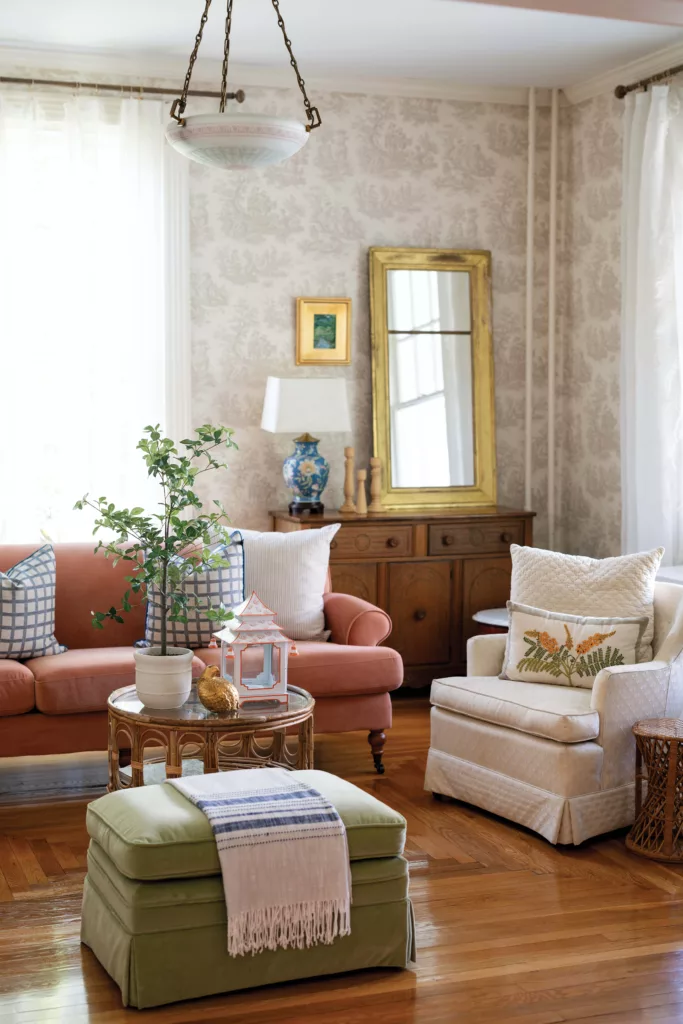
Having a classic parlor room was one of Price’s dreams. “As a little girl, I fondly remember visiting many older homes, enchanted by the idea of a space designed for sitting and engaging in conversation.”
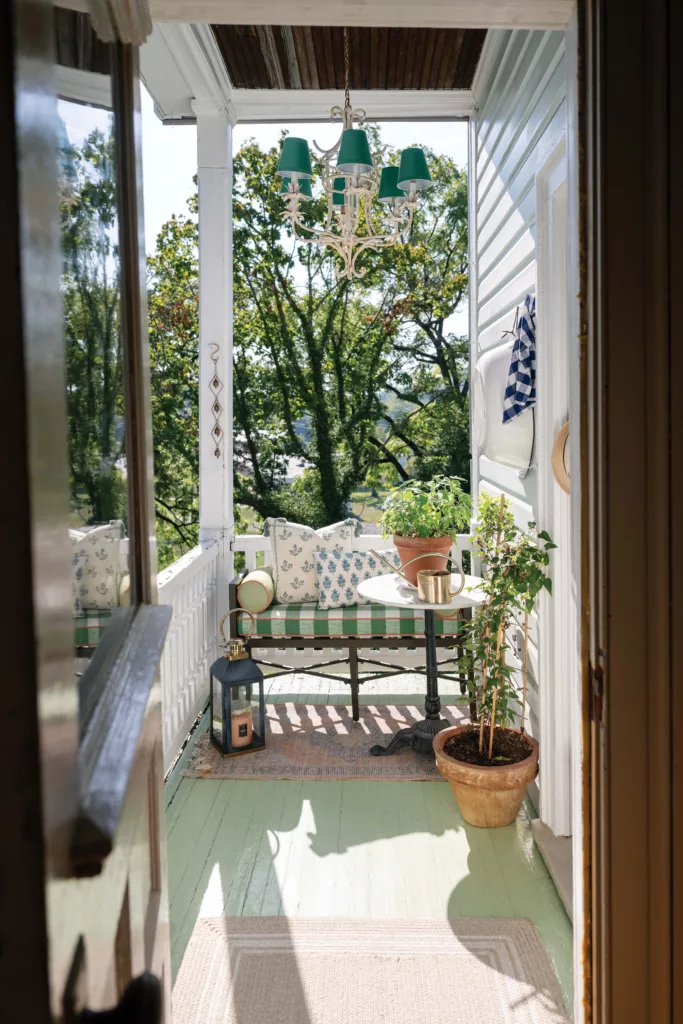

Price calls the kitchen the “crowning gem of the entire renovation.” Once the floors were removed, she discovered the original location of the range. “I knew we had to restore that piece of history in the house,” she says, adding that it required some clever adjustments to the room’s overall design. “The range is an Italian-made Ilve,” Price explains. “It’s not only beautiful but also a true workhorse!”
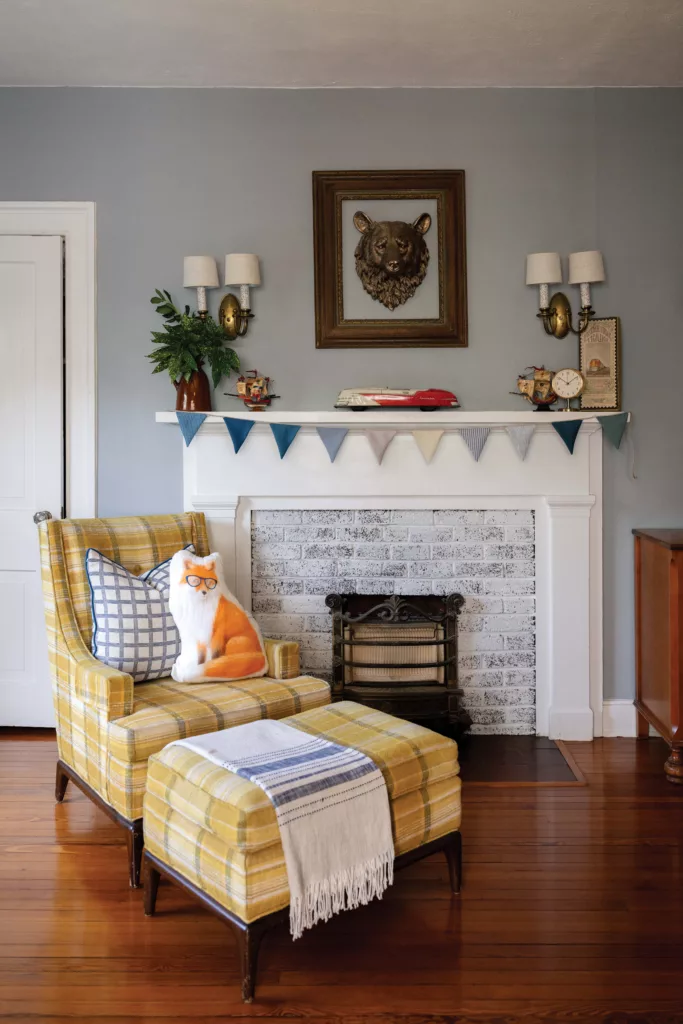
Just three days before Price’s son, Ollie, was born, the die-hard renovator found herself lying on her side, painting the baseboards of his nursery. She managed to finish, and Ollie arrived three days later. Her goal was to create a mid-century vintage kids’ room, and during her pregnancy, she scoured vintage shops, searching for just the right décor.
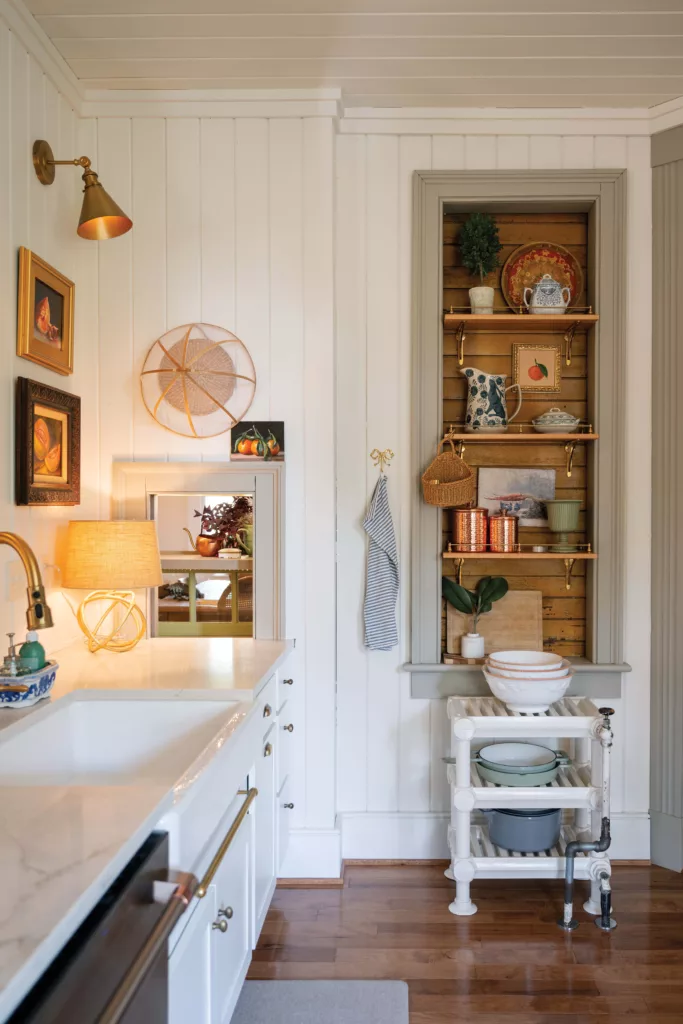
Price turned an old ironing board closet into practical shelving, where she can also display her favorite antiques. Many suggested closing it off, “but when I uncovered the original heart pine backing, I knew we had to celebrate that story instead of hiding it away,” she says.
Price says she was blessed with a lineage of women who knew how to make life beautiful without shrinking from a good challenge, and that’s what she shares on her Instagram account, which now has nearly 200,000 followers. “Because of my momma and my Mimi, I’m constantly thinking about how décor is speaking to the elements of home and how it relates to everything in life.” Find her stunning domestic imagery and occasional NSFW language at @juliacurated.

